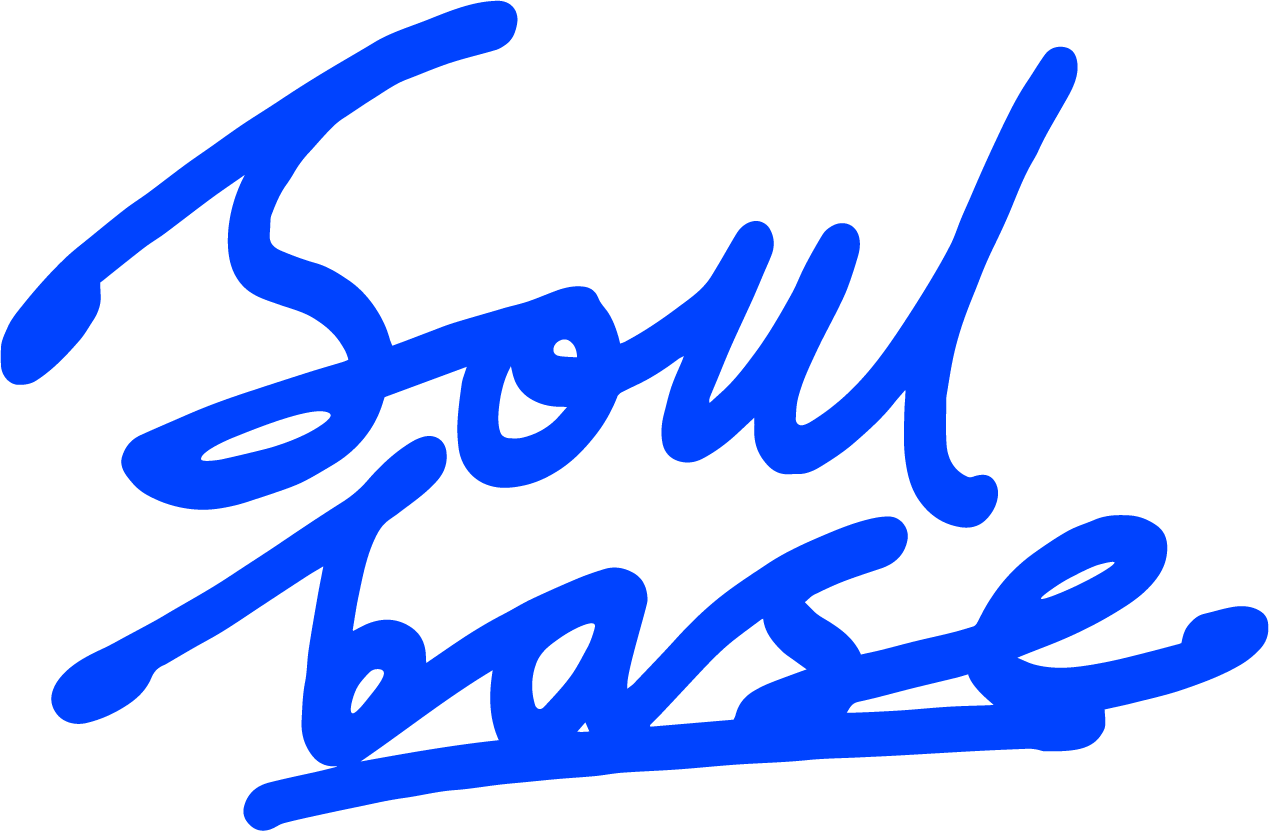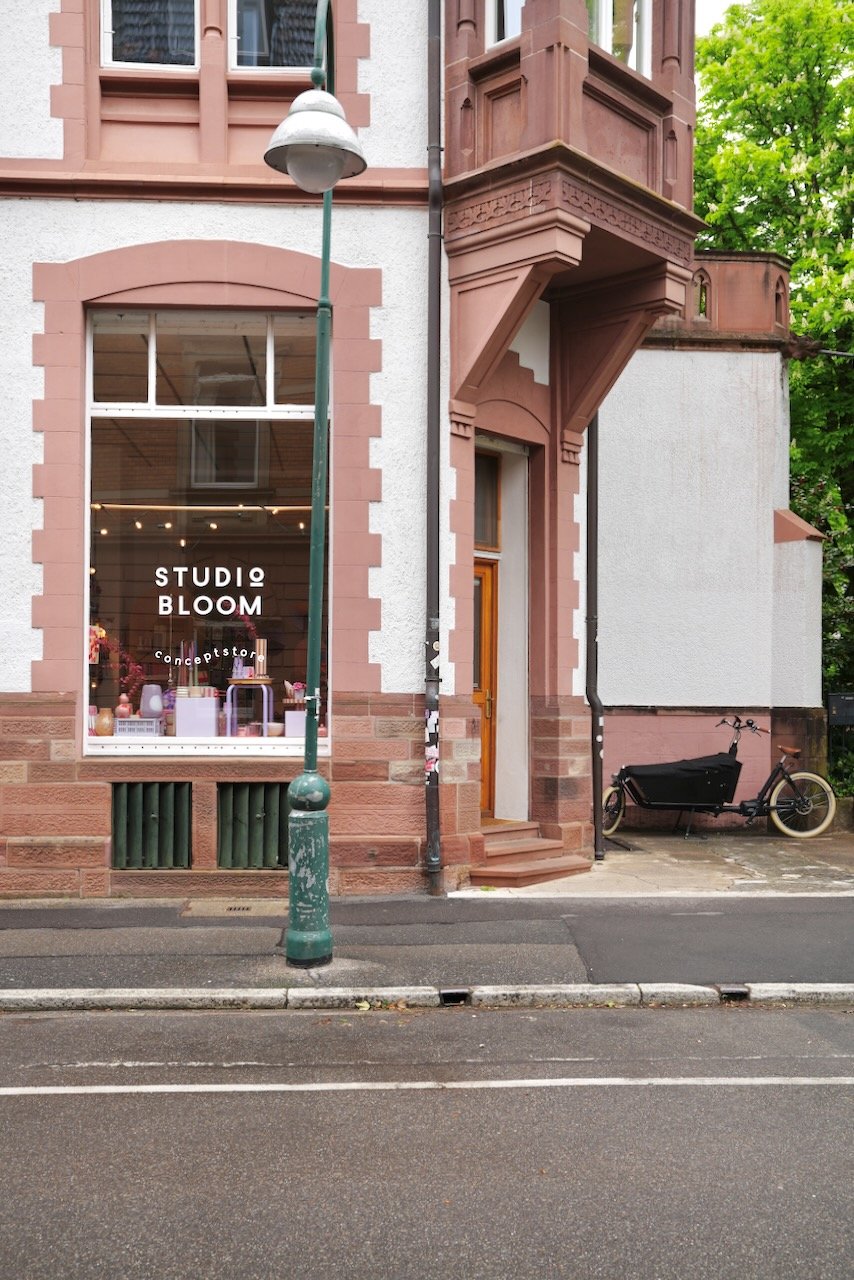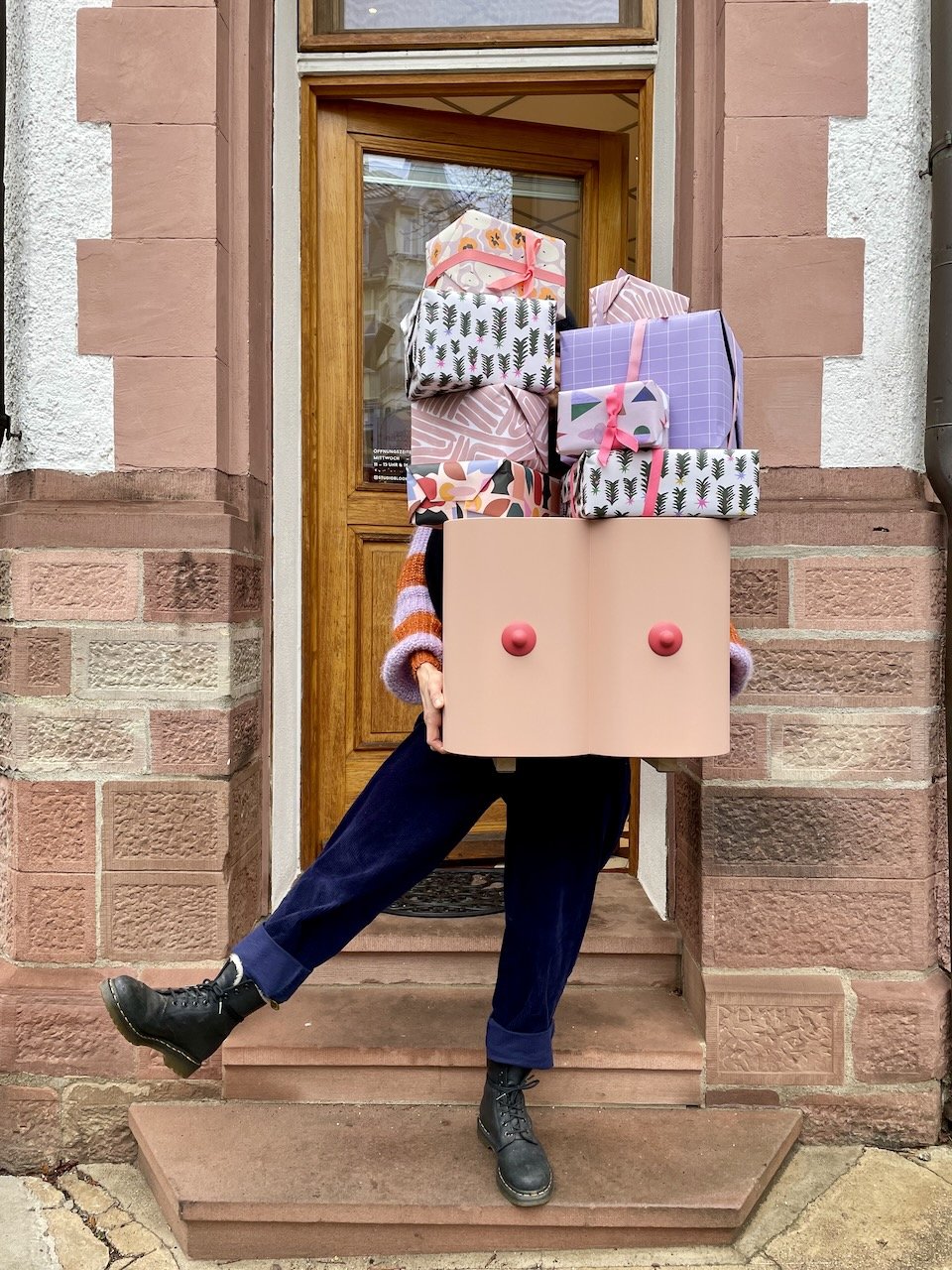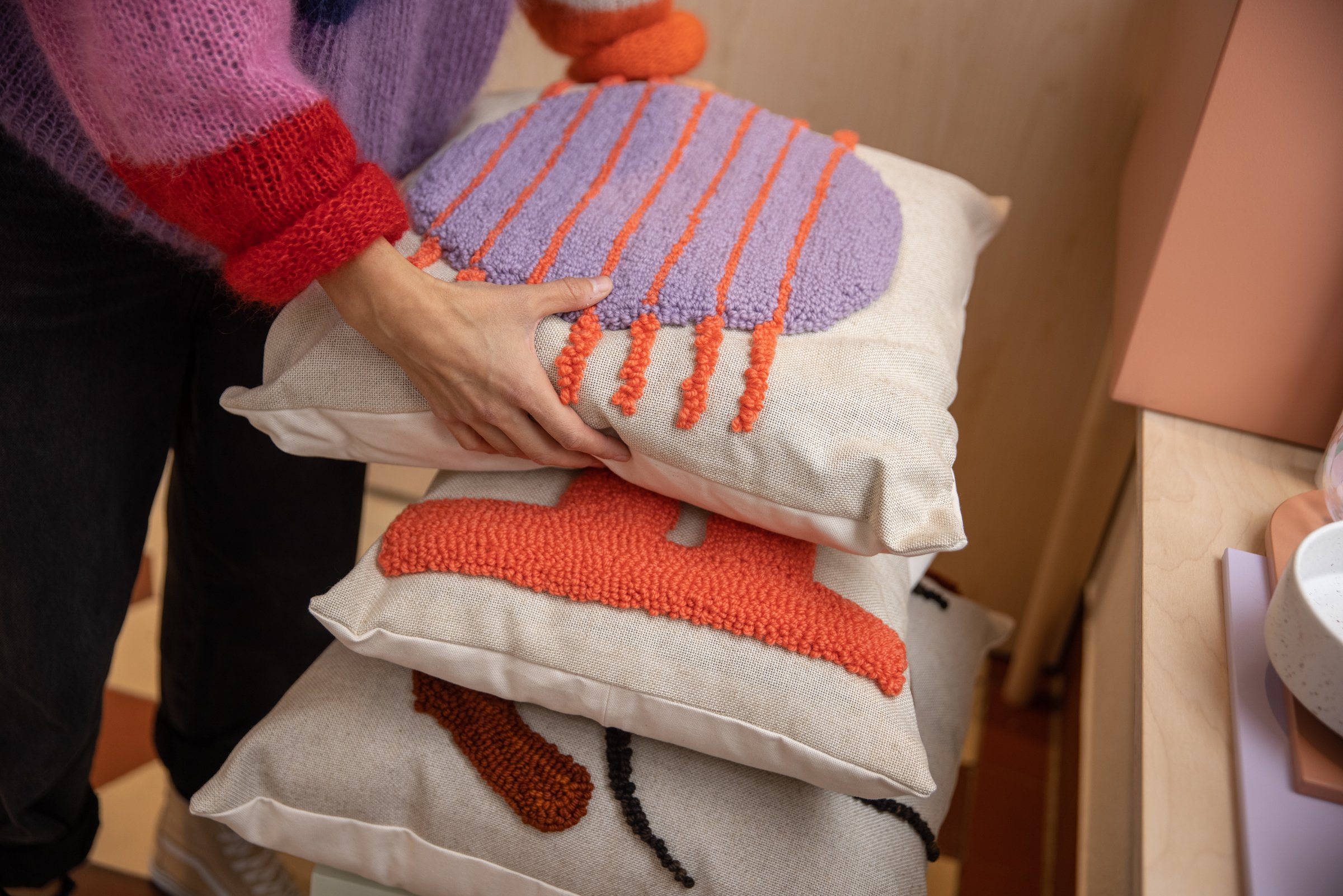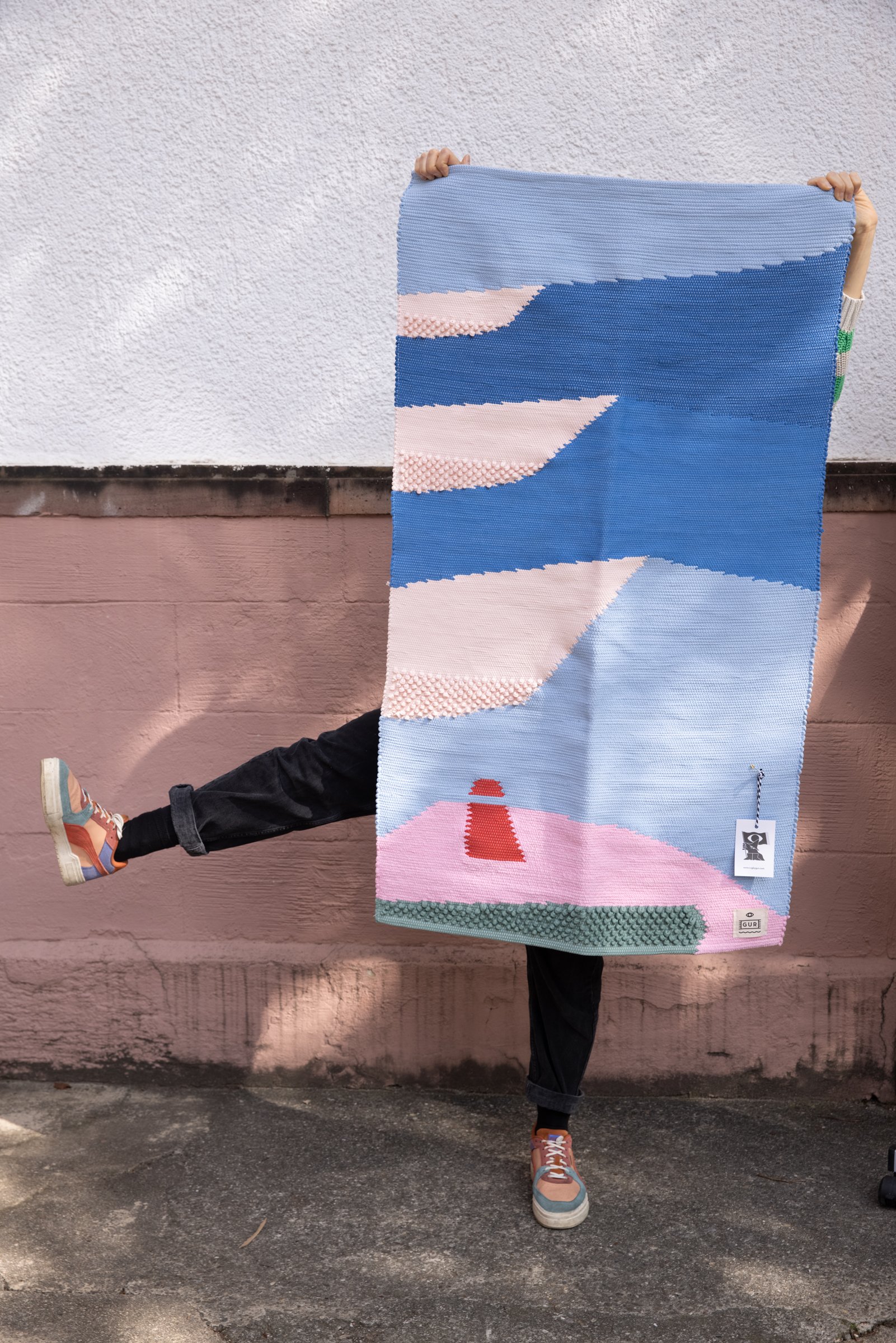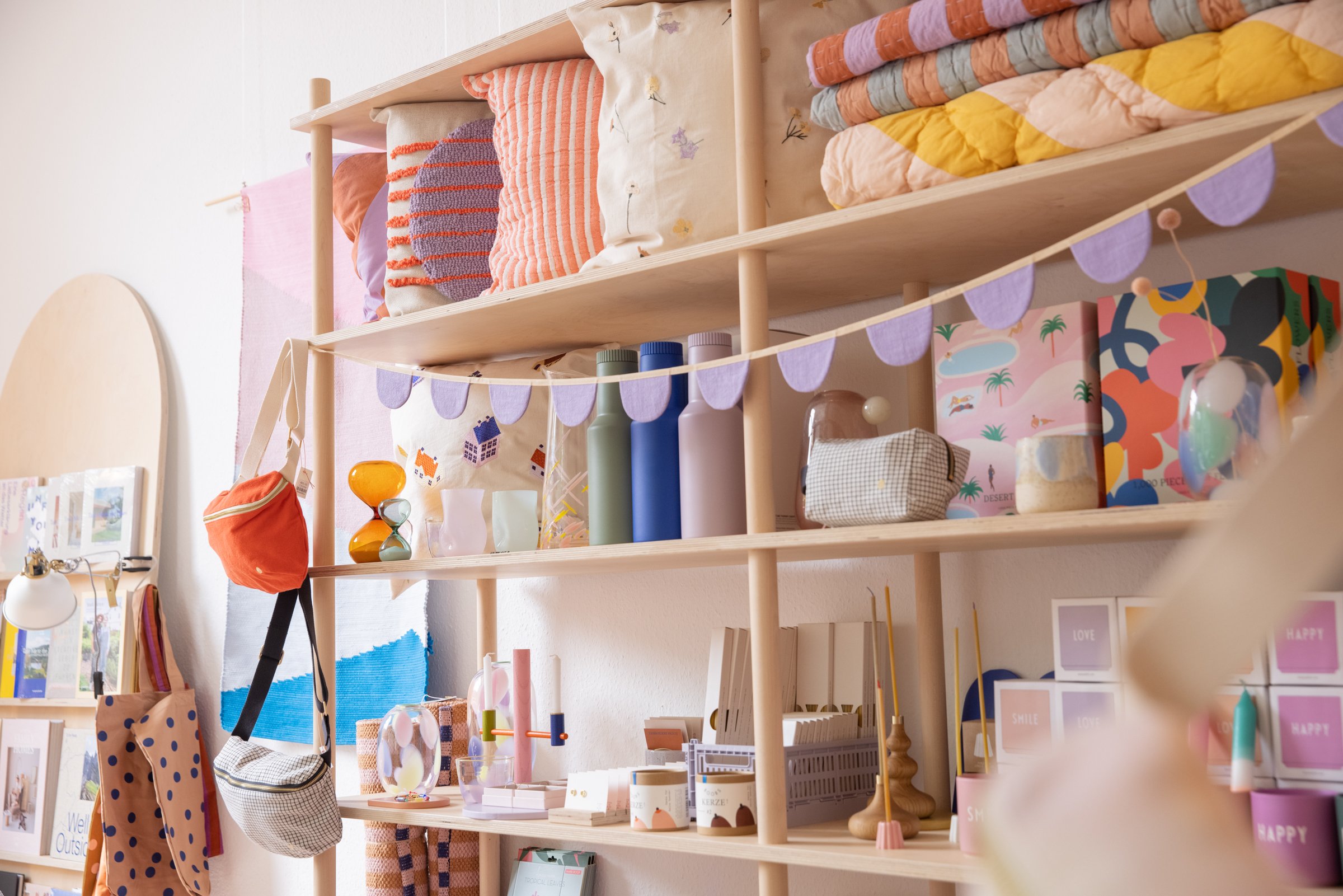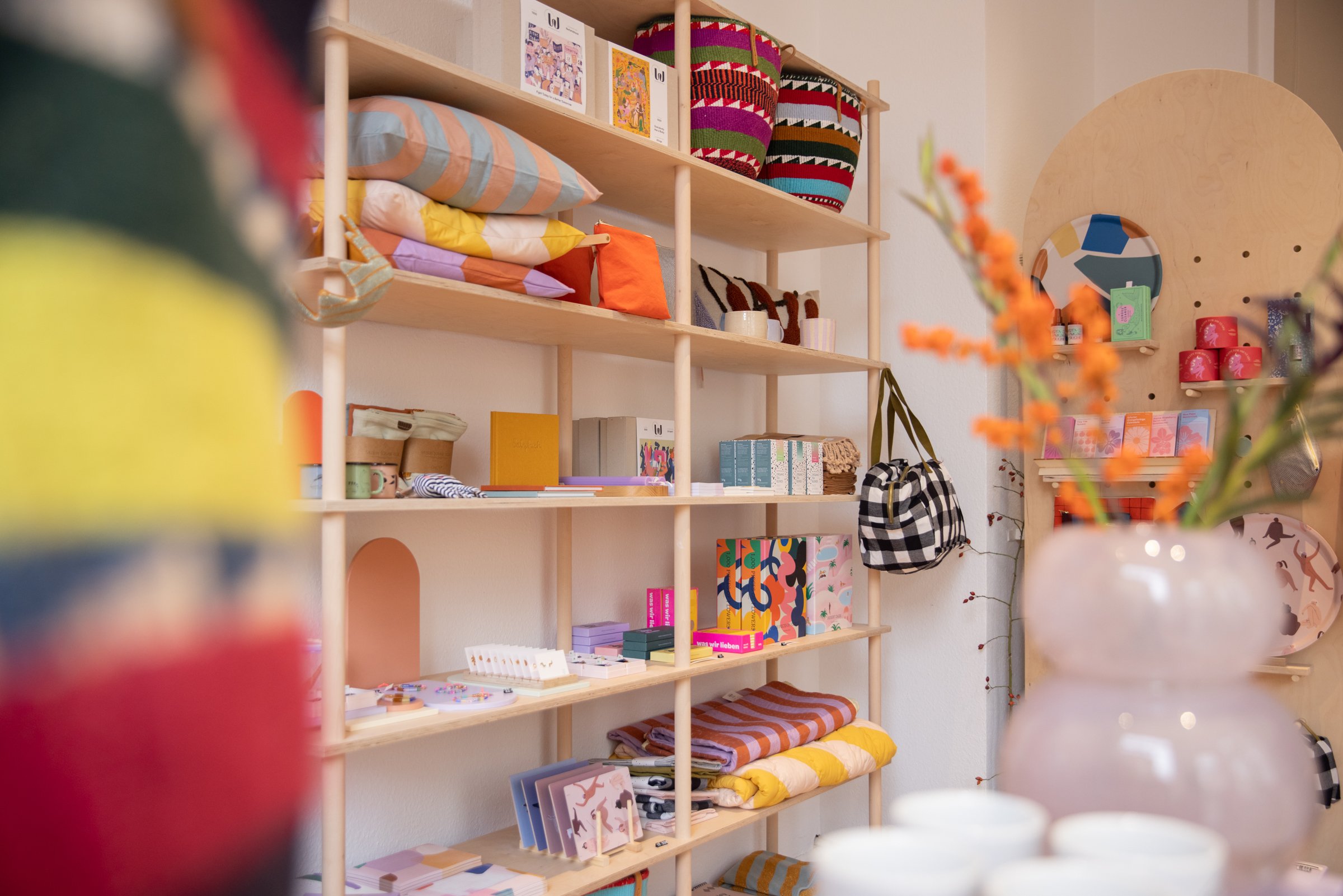Studio Bloom Conceptstore :
Studio Bloom Tiny Store is more than just a shop — it’s a vivid, creative space that reflects the passion and ingenuity of its founder, Luzi Olpp. As the creative head behind this colorful haven, Luzi has built a unique store where handmade crafts, curated products and artistic expression come together in perfect harmony.
Growing up in a home filled with creative energy, Luzi’s path into the creative world seemed destined. It wasn’t long before she began making and selling her own jewelry as a child at flea markets. Inspired by her sister, a fashion and textile designer, Luzi’s natural creativity flourished into a professional pursuit.
After several years as a florist, Luzi ventured into the digital world of graphic design. Her creative spirit found new avenues, eventually leading her to open Studio Bloom Tiny Store. What began as a small handmade business during her maternity leave has blossomed into a full-fledged creative endeavor, providing a carefully curated selection of products sourced from around the world.
In this exclusive feature, Luzi shares her personal journey, insights into her creative process and the inspirations behind her vibrant label and store. Through her story, we gain a deeper understanding of how passion, experimentation and family life shape her space where color, creativity, and community thrive.
Imagery & Styling by: Simone Schuldis & Luzi Olpp
Can you tell us how your journey into the creative world began?
I've been creative for as long as I can remember. My home was always a place of creativity. My Croatian grandmother, who lived with us, was a seamstress, and my mother produced intricate handicrafts for several stores in the city. When I was about 12 years old, I attended a jewelry-making workshop and then started selling my first small crafts at flea markets. My sister, who is eight years older, studied fashion and textile design, and she always inspired and impressed me with her ideas. So, I quickly realized that I not only wanted to be creative as a hobby, but I also wanted to pursue it professionally.
What were the most important experiences or insights you gained during your education and early career years?
During my first training as a florist, I learned an incredible amount, especially how to organize myself well and take responsibility. In the following years, I managed a flower shop and was responsible for purchasing, design and coordinating staff. I realized that I was good at working creatively on my own and implementing ideas. Eventually, I was allowed to design a new branch and implement a lot of what I had conceptualized. That was quite unusual for my age, but I really took a lot from that period.
What motivated you to start studying graphic design after several years as a florist?
After managing the flower shop for a few years, I began to wonder if that was it. Should I open my own shop, or was there something else? What else was I interested in?
In the evenings, I worked with my former roommate on a new website for the flower shop and quickly realized that digital creativity excited me just as much as the manual work. Through designing the website, I was drawn into a whole new creative field that excited me a lot. Since I was still quite young, there was no reason not to try something new and move on. That's why I eventually ventured into other creative fields to explore and challenge myself.
How do you define creativity for yourself, and do you distinguish between professional and personal creativity?
Creativity, for me, means allowing processes that aren't necessarily tied to a specific outcome. It's about trial and error, engaging with materials, colors and shapes and experimenting. It's entering a flow state where you lose track of time and completely immerse yourself in what you're doing.
For me, personal and professional creativity often blend unconsciously because I don’t plan when I can or will be creative. It happens when I have the time and mental space for it. But for creativity, I also need external input — exhibitions, new cities, concerts, people, conversations and sometimes just time with myself. I often find that I am most creative at night, when everyone else is asleep, and I don't have to worry about appointments or cooking lunch for the kids. The nights are my best hours for being creative.
What led you to open a physical store, and how did you find the perfect space?
To be honest, it was a totally spontaneous decision and not really part of my plan. During my maternity leave, I built up a small handmade business (which I never thought would become my main job) working from home, which was practical at first. But after three years, I realized that I didn’t want to keep mixing work and family life like that. So, I unconsciously started looking for a space where I could better separate the two and also become more visible to others. One day, I saw a sign on the little shop I used to pass every day on my way to the kindergarten. I had always noticed the shop because of its incredibly high ceilings and the beautiful floors. It was small but big enough to take a chance on the “shop” project. But since I didn’t just want to sell my crafts or see it only as a workshop, the idea quickly came to sell other beautiful things and occasionally plan small events.
How would you describe the style of your label and your store?
Above all, very colorful and vibrant. But "colorful" doesn’t always mean the same thing to me. I find it incredibly exciting to combine colors and create small color worlds. This fascination has been with me since my days as a florist. Of course, there are many Nordic design influences, but the products also come from elsewhere. I don’t think there’s a specific name for my label’s style language.
How do you select the products you offer in your store? Are there any specific criteria?
It’s a mix of research, travel inspiration and chance. Many products from the labels I sell in my store are things I originally bought myself, either in a city or online. Through the creative Instagram bubble, there has been a certain exchange among people who create and sell their own things. Nowadays, I also get approached directly by artists who want to present their products to me, which happens more and more frequently. I hardly ever go to trade fairs.
Are there any countries or regions you particularly like sourcing products from?
For me, it’s more about the people behind the products and the individual design. Most of the items in my store come from small manufacturers from all over the world, with whom I regularly keep in touch. I also carry a few well-known design brands to balance out the margins of my sales.
How important is experimentation and trying new techniques and materials to you?
Extremely important, although it’s something that currently doesn’t happen as often as I’d like since I can barely keep up with producing my current handmade pieces. I think it’s crucial and try to create little “islands” for myself and take breaks to experiment.
What have you learned about yourself from combining family and entrepreneurship?
Since my husband has been self-employed for as long as I’ve known him, I’ve learned a lot from him. Not just about accounting and the like, but most importantly, about setting boundaries for work, family time and personal time. I tend to quickly get caught up in work because I enjoy it so much.
Through our 50/50 split of work and caregiving, we’ve managed to balance everyone’s needs while also understanding each other’s business challenges. Sharing work and family responsibilities so equally is the biggest win for me. I often work late into the night, but I really appreciate being able to sleep in a bit longer in the morning. I do work a lot, but it never feels like it.
What offline sources do you use for inspiration?
Mainly our road trips, conversations with other creatives, magazines, books, exhibitions and always, always flowers and their colors.
Do you have favorite stores, galleries or artists you frequently visit or whose work inspires you?
I love being creatively surprised, so I tend to seek out new things rather than revisiting the familiar. Even if something isn’t always my style, I always take something from the experience, even if it’s unconscious.
What do you like to do when you're not being creative? What role do skating, surfing and traveling play in your life?
When I was working full-time at the flower shop with a lot of responsibility, I was looking for something to help me stop my mental carousel and disconnect from work. That’s how I somehow got into longboarding and other board sports. At the same time, I met my husband, who makes his own longboards and skateboards and runs a small skate shop. Board sports are a constant part of our lives and always clear our minds. As a family, this passion connects us the most, and it brings us to a shared space where we all feel a bit like kids and learn from each other. It’s really wonderful that our children share this passion with us.
How important are breaks and downtime for your creative work?
When I’m actively and creatively working on things, I definitely need regular breaks. But this happens automatically through my other non-creative work areas. Since creative and new ideas usually come to me spontaneously or unconsciously, I can’t really separate them or take a proper “break” from them. Especially when I’m traveling or taking a break, my mind is always buzzing. When I’m not caught up in the day-to-day work and can take a step back, my mind has more room for new ideas. I might even be at my most creative in terms of ideas when I’m on vacation or taking time off.
How do you organize your daily routine to manage the different demands of Studio Bloom, the store and your family?
My husband and I have a clear division of work and childcare days. Each of us has three full workdays and two days where we work half-days with the kids. On one day, we get support from my parents. One of us handles shopping, the other takes care of laundry. It’s all pretty well organized and maybe a bit traditional, but honestly, we never have arguments or discussions about household or childcare issues because of it.
I use one of my workdays for research, bookkeeping, office work and production. On the other days, I’m in the store, ordering and logging new stock, cleaning and managing the webshop and orders. I answer emails, reorganize and stock the shelves. If there’s time left, I continue to produce my handmade items, which I also sell to other stores, and handle wholesale orders. Sometimes I work at night as well — I still find that’s when I’m most productive.
How important is personal contact with your customers, and how do you maintain these relationships?
One of the main reasons the store caught my attention was that, in the years prior, I was only dealing with online and wholesale orders. I missed the direct contact with customers that I was used to in the flower shop. Online, whether through Instagram or email, you get a lot of great feedback, but it’s still different from standing face-to-face and exchanging a few words. Running a store is definitely not just “nice to have;” it requires an incredible amount of work that can quickly wear you out and is often unseen. But the interaction with my customers gives me a lot of motivation to keep going. I love it when customers from other cities stop by, or customers who once bought a bracelet online from me years ago and now want a second one because they love it so much. They’re happy that there’s now a local store where they can enjoy the colorful selection. Many customers also really appreciate the fresh flowers in the store and value what’s not directly related to consumption. It’s the personal contact and appreciation that I really missed during my online-only years. I wouldn’t want to give that up again.
What are your goals and visions for the future development of your label and store?
I want to remain open to new things and host small events at the store more often. I want to ensure there’s always something for every budget and that you can find unique things here that aren’t available everywhere. I also have a few secret ideas I’m working on, but I’ll only reveal them when they’re ready. But it will definitely remain "blooming." :)
